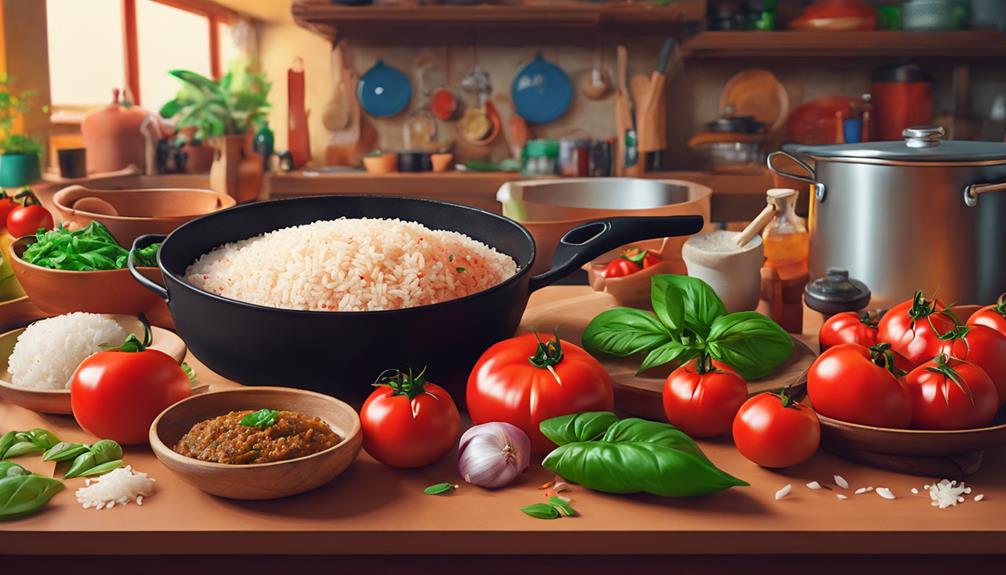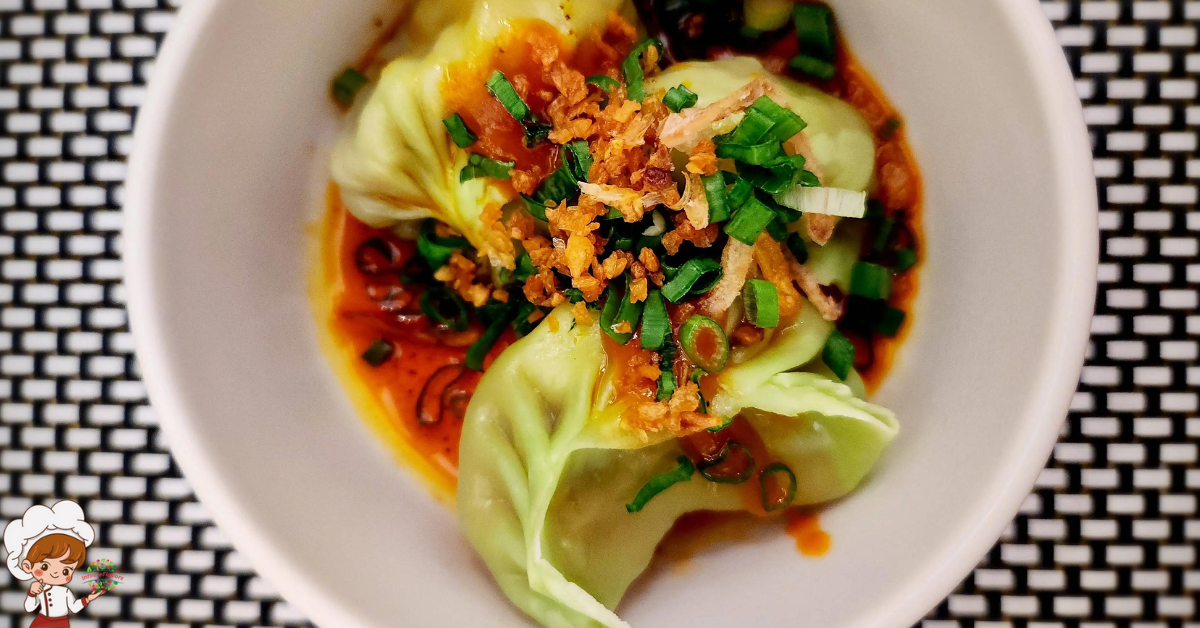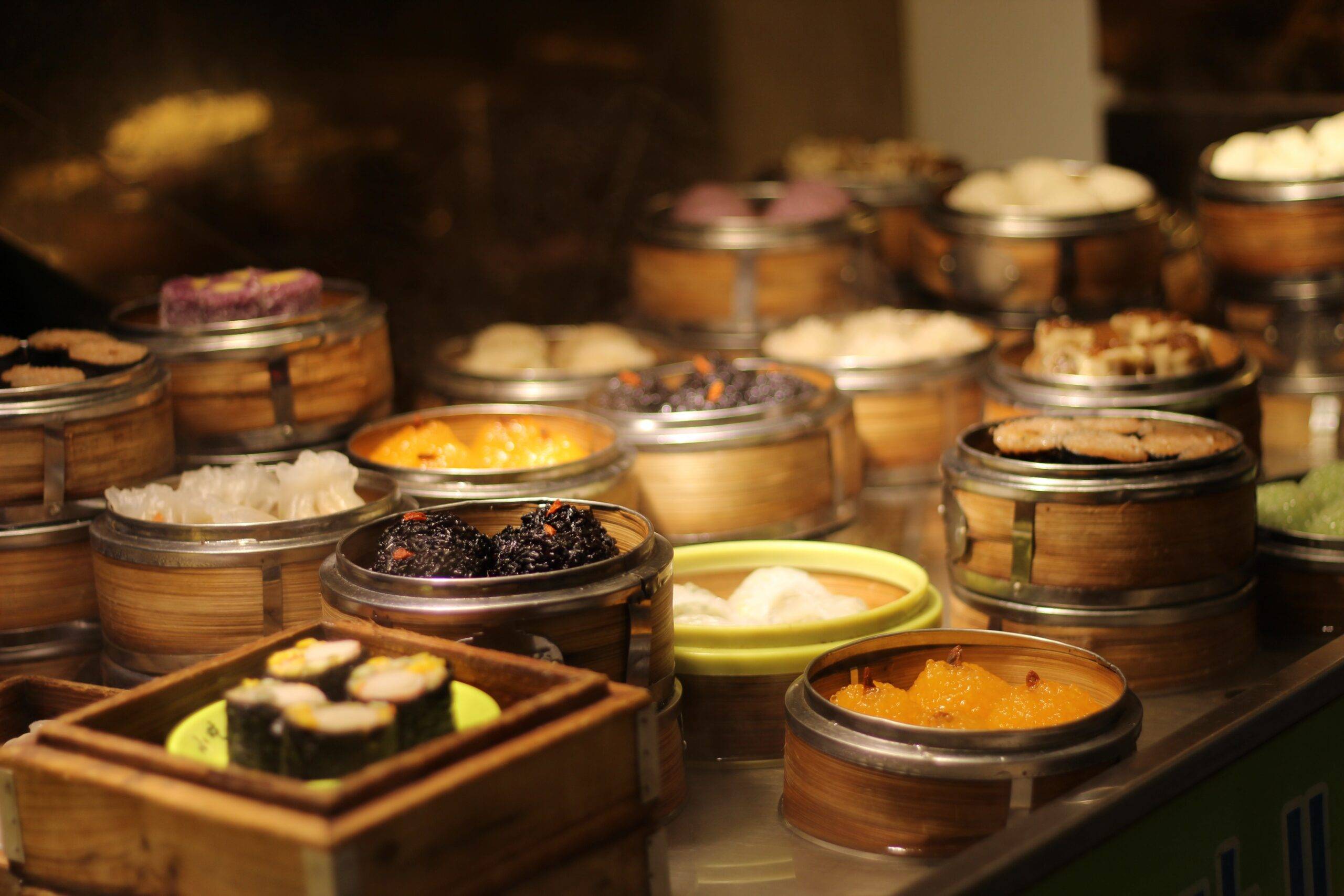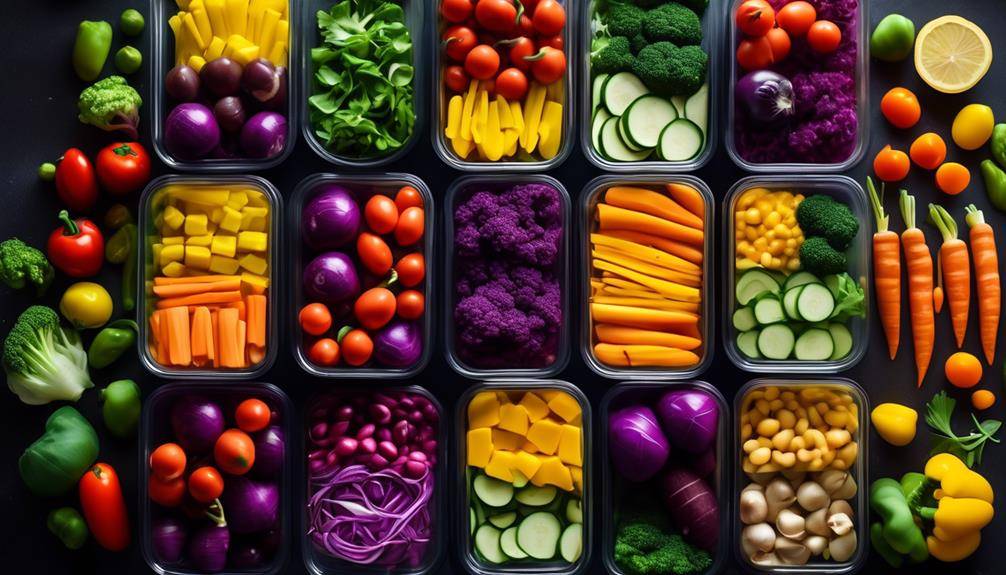How To Maintaining a Gluten-Free Diet
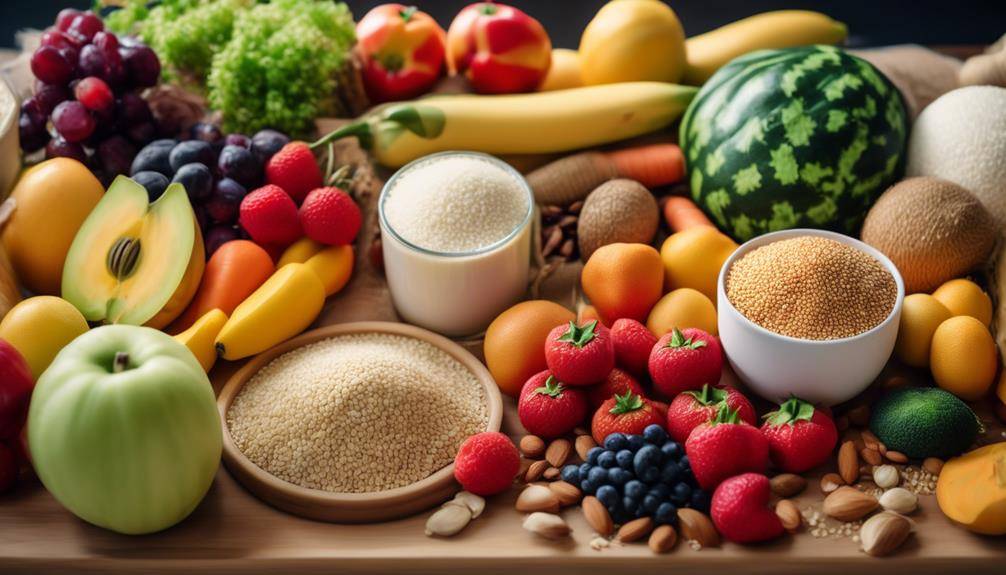
How To Maintaining a Gluten-Free Diet; Coincidentally, you have recently been diagnosed with gluten intolerance, and now you find yourself facing the challenge of maintaining a gluten-free diet. It may seem overwhelming at first, but fear not, as this discussion aims to guide you through the process and provide you with valuable insights and practical tips to help you navigate this dietary shift successfully. With a wealth of information and strategies at your disposal, you will soon discover that maintaining a gluten-free lifestyle is not only manageable but also rewarding. So, let’s dive right in and uncover the secrets to a healthy and fulfilling gluten-free journey.
Understanding Gluten Intolerance
To better understand gluten intolerance, it is important to recognize the adverse reactions that occur when individuals consume gluten-containing foods. Gluten sensitivity, also known as gluten intolerance, refers to the body’s inability to properly digest gluten, a protein found in wheat, barley, and rye. When people with gluten intolerance consume gluten, it triggers an immune response that damages the lining of the small intestine, leading to various symptoms and health problems.
One of the main causes of gluten intolerance is genetics. Research has shown that individuals with certain genetic markers are more susceptible to developing gluten intolerance. These markers affect the body’s immune system and its ability to properly recognize and tolerate gluten.
Another potential cause of gluten intolerance is a leaky gut. This condition occurs when the lining of the small intestine becomes permeable, allowing undigested gluten particles to enter the bloodstream. This triggers an immune response and leads to inflammation and damage in various parts of the body.
Additionally, certain medical conditions, such as celiac disease, dermatitis herpetiformis, and wheat allergy, can also cause gluten intolerance. Celiac disease is an autoimmune disorder where the immune system mistakenly attacks the small intestine in response to gluten consumption. Dermatitis herpetiformis is a skin condition that results from gluten sensitivity, causing a painful, itchy rash. Wheat allergy is an allergic reaction to wheat proteins, including gluten.
Identifying Hidden Sources of Gluten
If you have gluten intolerance, it is important to be aware of hidden sources of gluten in order to effectively maintain a gluten-free diet. While it may seem straightforward to avoid foods like bread, pasta, and pastries that contain gluten, there are several hidden sources that you need to be mindful of. Here are four key hidden sources of gluten that you should be aware of:
- Sauces and condiments: Many sauces and condiments, such as soy sauce, teriyaki sauce, and salad dressings, often contain gluten as a thickening agent. It is crucial to read the labels carefully and look for gluten-free alternatives or make your own at home.
- Processed foods: Processed foods like deli meats, canned soups, and snack foods can contain hidden sources of gluten. Manufacturers often add gluten as a binder or filler. Always check the ingredient list and look for gluten-free certifications on the packaging.
- Medications and supplements: Some medications and supplements may contain gluten as a filler or coating. It is important to consult with your doctor or pharmacist to ensure that your medications and supplements are gluten-free.
- Cross-contamination: Cross-contamination can occur when gluten-free foods come into contact with gluten-containing foods during preparation or cooking. This can happen in shared kitchen utensils, cutting boards, or cooking surfaces. It is important to thoroughly clean and separate gluten-free and gluten-containing items to prevent cross-contamination.
Stocking a Gluten-Free Pantry
When it comes to stocking a gluten-free pantry, there are a few essential staples you should have on hand. These include gluten-free flours, grains, and baking ingredients like almond flour, quinoa, and tapioca starch. Additionally, smart pantry organization is key to maintaining a gluten-free diet. By keeping your pantry well-stocked and organized, you can easily find the ingredients you need and avoid cross-contamination.
Essential Gluten-Free Staples
Stocking a gluten-free pantry with essential staples is crucial for maintaining a gluten-free diet. When it comes to gluten-free meal planning and baking, having the right ingredients on hand is key. Here are four essential gluten-free staples to stock up on:
- Gluten-free flours: Replace wheat flour with gluten-free alternatives like rice flour, almond flour, or tapioca flour. These can be used in a variety of recipes, from cakes to bread.
- Gluten-free grains: Include options like quinoa, millet, and buckwheat in your pantry. These grains are naturally gluten-free and can be used as a base for salads, stir-fries, or as a side dish.
- Gluten-free pasta: Look for pasta made from rice, corn, or quinoa. These alternatives provide a similar texture to traditional pasta without the gluten.
- Gluten-free condiments and sauces: Check labels carefully to ensure they are gluten-free. Stock up on gluten-free soy sauce, tamari, and condiments like mayonnaise and ketchup.
Smart Pantry Organization
Now let’s explore the importance of organizing your pantry smartly when maintaining a gluten-free diet. A well-organized pantry is essential for a smooth and efficient cooking experience. When it comes to a gluten-free diet, having a smart kitchen setup becomes even more crucial. Start by categorizing your gluten-free ingredients and storing them separately from gluten-containing ones. Use clear containers or labels to easily identify each item. This will help prevent any cross-contamination.
Additionally, keep your pantry stocked with a variety of gluten-free grains, flours, and baking mixes to ensure you have plenty of options for meal planning. Having a well-organized pantry will not only save you time and effort but also reduce the risk of accidentally consuming gluten. So, take some time to declutter and arrange your pantry in a way that supports your gluten-free lifestyle.
Reading Labels for Gluten-Free Products
To maintain a gluten-free diet, it is crucial to carefully read labels on products for any presence of gluten. While some products may be labeled as “gluten-free,” it’s important to remember that not all gluten-free products are created equal. Here are four key points to keep in mind when reading labels for gluten-free products:
- Look for hidden gluten sources: Gluten can hide in various ingredients under different names. Common hidden sources of gluten include wheat, barley, rye, and oats (if not specifically labeled gluten-free). Additionally, ingredients like malt, modified food starch, and hydrolyzed vegetable protein can also contain gluten. Familiarize yourself with these hidden sources to avoid any accidental gluten consumption.
- Check for gluten-free certification: Products that are certified gluten-free have undergone rigorous testing to ensure they meet strict gluten-free standards. Look for certifications from reputable organizations like the Gluten-Free Certification Organization (GFCO) or the National Celiac Association (NCA). These certifications provide an added level of assurance that the product is safe for those following a gluten-free diet.
- Read the entire label: Don’t just focus on the “gluten-free” statement on the front of the packaging. Take the time to read the entire ingredient list and any warnings or allergen statements. Look for any potential cross-contamination risks or shared equipment with gluten-containing products.
- Be cautious of vague terms: Be wary of labels that use terms like “may contain gluten” or “processed in a facility that also processes wheat.” While these statements are voluntary and meant to inform those with severe gluten allergies, it’s important to assess your own level of sensitivity and make an informed decision.
Dining Out on a Gluten-Free Diet
When dining out on a gluten-free diet, it is important to consider menu options and potential cross-contamination. Look for restaurants that offer gluten-free alternatives or have a dedicated gluten-free menu. Ensure that the staff is knowledgeable about cross-contamination and takes proper precautions to avoid it, such as using separate utensils and cooking surfaces.
Menu Options
Discovering gluten-free menu options while dining out is essential for maintaining a gluten-free diet. Here are four tips to help you navigate the menu and find safe options:
- Research restaurants in advance: Look for establishments that offer gluten-free options or have a dedicated gluten-free menu. This will save you time and reduce the risk of cross-contamination.
- Ask questions: Don’t hesitate to ask your server about gluten-free options or if modifications can be made to accommodate your needs. Ensure that the restaurant staff understands the importance of avoiding cross-contamination.
- Be cautious with sauces and dressings: Many sauces and dressings contain gluten. Ask for them on the side or inquire about gluten-free alternatives.
- Choose naturally gluten-free dishes: Opt for dishes that are naturally free of gluten, such as grilled meats, salads, and steamed vegetables.
Cross-Contamination
Now, let’s shift our focus to the importance of understanding cross-contamination while dining out on a gluten-free diet. Cross-contamination occurs when gluten-free food comes into contact with gluten-containing ingredients or surfaces, leading to the potential for gluten contamination. To prevent cross-contamination, it is crucial to communicate your dietary needs to the restaurant staff. They should be aware of the importance of using separate utensils, cutting boards, and cooking surfaces when preparing gluten-free meals.
Additionally, it is essential to ensure that gluten-free cooking techniques are followed, such as using clean and sanitized equipment, avoiding shared fryers, and using dedicated gluten-free ingredients. By being proactive and vigilant, you can significantly reduce the risk of cross-contamination and enjoy a safe dining experience while maintaining a gluten-free diet.
Navigating Social Situations and Gluten-Free Events
Navigating social situations and gluten-free events can be challenging, but with some preparation and awareness, you can confidently maintain your gluten-free diet. Here are some tips to help you navigate social situations and gluten-free events:
- Communicate your dietary needs: When attending social events or dining with friends and family, it’s important to communicate your dietary restrictions. Let the host or restaurant staff know about your gluten-free diet in advance, so they can accommodate your needs. This will help avoid any misunderstandings or cross-contamination.
- Bring your own food: If you’re unsure about the gluten-free options available at an event, it’s always a good idea to bring your own food. Pack a small meal or snack that you know is safe for you to eat. This way, you won’t have to worry about accidentally consuming gluten.
- Educate others about gluten-free eating: Many people may not be familiar with gluten-free eating or may not understand the importance of cross-contamination. Take the opportunity to educate others about your dietary needs and the potential risks of consuming gluten. This will help create a supportive environment and ensure that others are mindful of your needs.
- Plan ahead for gluten-free travel: When traveling, it’s crucial to plan ahead and research gluten-free options at your destination. Look for restaurants that offer gluten-free menus or have a good understanding of gluten-free preparation. Additionally, consider packing gluten-free snacks to have on hand during your journey.
Maintaining a Balanced and Nutritious Gluten-Free Diet
When it comes to maintaining a balanced and nutritious gluten-free diet, it’s important to prioritize your health and well-being while still enjoying a variety of delicious and nourishing food options. Balanced meal planning is the key to ensuring that you are meeting all your nutritional needs while avoiding gluten-containing foods.
To begin with, focus on incorporating a variety of whole, unprocessed foods into your meals. This includes fruits, vegetables, lean proteins, and healthy fats. These foods are naturally gluten-free and provide essential vitamins, minerals, and antioxidants that support overall health.
When planning your meals, consider gluten-free substitutes for your favorite gluten-containing foods. For example, instead of traditional wheat-based pasta, opt for gluten-free alternatives made from brown rice, quinoa, or chickpeas. These substitutes not only provide a similar taste and texture but also offer additional nutritional benefits.
In addition to incorporating gluten-free substitutes, it’s important to pay attention to the nutritional content of your meals. Ensure that you are getting enough fiber by including foods such as beans, lentils, and gluten-free whole grains like quinoa and amaranth. Also, aim to include a source of protein in each meal, such as lean meats, poultry, fish, or plant-based proteins like tofu or legumes.
Furthermore, don’t forget to include healthy fats in your diet. Avocados, nuts, seeds, and olive oil are all excellent sources of monounsaturated fats that can help support heart health and provide satiety.
Lastly, be mindful of your portion sizes and listen to your body’s hunger and fullness cues. Eating a balanced gluten-free diet involves not only choosing the right foods but also eating in moderation.
Managing Cross-Contamination in the Kitchen
To effectively manage cross-contamination in the kitchen, it is crucial to implement proper cleaning and food handling practices. Preventing contamination and ensuring a gluten-free environment is essential for individuals following a gluten-free diet. Here are four key cleaning techniques to help you maintain a safe and gluten-free kitchen:
- Separate Utensils and Surfaces: Designate specific utensils, cutting boards, and countertops for gluten-free food preparation. This prevents the risk of cross-contamination from gluten-containing ingredients. It is also important to have separate toasters and storage containers for gluten-free items.
- Thorough Cleaning: Regularly clean all kitchen surfaces, including countertops, sinks, and appliances, using hot water and dish soap. Pay extra attention to areas where gluten-containing ingredients may have come into contact. Scrubbing with a brush or sponge can effectively remove any residual gluten.
- Use Separate Cooking Equipment: When preparing gluten-free meals, use separate pots, pans, and baking sheets to avoid cross-contamination. If this is not possible, thoroughly clean the equipment before use. Additionally, consider using parchment paper or aluminum foil on baking sheets to create a barrier between gluten-containing and gluten-free items.
- Properly Store Ingredients: Store gluten-free ingredients separately from gluten-containing ones to prevent cross-contamination. Label containers clearly and maintain a well-organized pantry to minimize the risk of accidentally using the wrong product.
Coping With Gluten Withdrawal Symptoms
When transitioning to a gluten-free diet, you may experience common withdrawal symptoms such as fatigue, irritability, and brain fog. It’s important to remember that these symptoms are temporary and a sign that your body is adjusting. To manage cravings effectively, try incorporating nutrient-rich foods, staying hydrated, and finding alternative gluten-free options that satisfy your cravings. Supporting your body’s transition by getting enough rest, practicing stress-reducing techniques, and seeking support from a healthcare professional or a support group can also be beneficial.
Common Withdrawal Symptoms
During the initial stages of transitioning to a gluten-free diet, it is common to experience withdrawal symptoms as your body adjusts to the absence of gluten. These symptoms can be challenging to deal with, but remember that they are temporary and a sign that your body is detoxifying. Here are some common withdrawal symptoms and tips for coping with them:
- Headaches: Headaches are a common withdrawal effect when eliminating gluten. Stay hydrated, get enough rest, and consider using natural remedies such as peppermint or lavender essential oils to alleviate the pain.
- Fatigue: Feeling tired or sluggish is another withdrawal symptom. Make sure you are getting enough sleep, eating a balanced diet, and incorporating regular exercise to boost your energy levels.
- Mood changes: Some people may experience mood swings or irritability during gluten withdrawal. Engage in stress-relieving activities like yoga or meditation, and consider talking to a therapist for additional support.
- Cravings: Cravings for gluten-containing foods can be intense during withdrawal. Find gluten-free alternatives that satisfy your cravings, such as gluten-free bread or pasta, and experiment with new recipes to keep your meals interesting.
Managing Cravings Effectively
Managing cravings effectively is crucial for coping with gluten withdrawal symptoms. When you eliminate gluten from your diet, your body may experience cravings for foods that contain gluten. It’s important to find alternatives that satisfy your cravings without compromising your gluten-free diet. Start by identifying the specific foods that you crave and look for gluten-free alternatives. For example, if you crave bread, try gluten-free bread made from alternative grains like rice or quinoa.
Experiment with different recipes and brands to find the ones that taste the best to you. Additionally, focus on incorporating nutrient-rich foods into your diet to help reduce cravings. Include plenty of fruits, vegetables, lean proteins, and healthy fats to keep you satisfied and minimize cravings. Remember, managing cravings is a process, so be patient with yourself and keep exploring new gluten-free options.
Supporting Your Body’s Transition
To effectively cope with gluten withdrawal symptoms, it is important to provide support for your body’s adjustment to a gluten-free diet. Here are four key ways to support your body’s needs during this transition:
- Stay hydrated: Drinking enough water is essential for overall health and helps flush out toxins from your body.
- Focus on nutrient-rich foods: Make sure your diet includes a variety of fruits, vegetables, lean proteins, and healthy fats to meet your body’s nutritional needs.
- Gradually make dietary adjustments: Instead of making sudden and drastic changes, gradually reduce your gluten intake to minimize withdrawal symptoms.
- Seek professional guidance: Consulting with a registered dietitian or nutritionist who specializes in gluten-free diets can provide you with personalized advice and support.
Finding Support and Resources for a Gluten-Free Lifestyle
For individuals who are following a gluten-free lifestyle, it is essential to find reliable support and resources to navigate the challenges that may arise. One way to find support is by seeking out gluten-free recipes. With the increasing popularity of gluten-free diets, there are now countless resources available online that provide a wide variety of delicious and nutritious gluten-free recipes. These recipes can help you maintain a balanced diet while still enjoying tasty meals.
In addition to finding gluten-free recipes, joining online support groups can be incredibly helpful. These groups provide a sense of community and a platform for individuals to share their experiences, tips, and advice. They can also be a valuable source of information, as members often share resources, recipes, and recommendations for gluten-free products. Online support groups allow you to connect with others who are facing similar challenges, providing a sense of understanding and encouragement.
When searching for support and resources, it is important to ensure that the information is reliable and evidence-based. Look for reputable websites, blogs, and forums that are run by experts or individuals with a deep understanding of the gluten-free lifestyle. Be cautious of misleading or inaccurate information and always consult with a healthcare professional or registered dietitian if you have any concerns or questions.
Frequently Asked Questions: How To Maintaining a Gluten-Free Diet
Can I Still Eat Oats on a Gluten-Free Diet?
Yes, you can still eat oats on a gluten-free diet. However, it’s crucial to choose oats that are labeled gluten-free to avoid cross-contamination. Other gluten-free alternatives to oats include quinoa, amaranth, and buckwheat.
How Do I Handle Gluten-Free Dining at a Friend’s House?
When dining at a friend’s house, communicate your dietary needs clearly and politely. Offer to bring a dish that fits your restrictions and ask if they can accommodate. Be open, but also prepared with safe options.
Is It Necessary to Follow a Gluten-Free Diet if I Have a Mild Gluten Intolerance?
If you have a mild gluten intolerance, following a gluten-free diet may not be necessary. However, managing your symptoms through a gluten-free diet can be effective in reducing discomfort and improving your overall health.
Can I Still Enjoy Alcoholic Beverages on a Gluten-Free Diet?
Yes, you can still enjoy alcoholic beverages on a gluten-free diet. Stick to drinks like wine, spirits, and gluten-free beers. Be cautious with mixed drinks and check ingredients for gluten. Gluten-free oats are also an option.
What Are Some Gluten-Free Alternatives to Traditional Wheat-Based Products?
You have many gluten-free options for bread, such as rice, corn, and quinoa bread. For pasta, try alternatives like brown rice, quinoa, or chickpea pasta. These options can help you maintain a gluten-free diet.
Conclusion
In conclusion, maintaining a gluten-free diet requires careful attention to hidden sources of gluten, stocking a gluten-free pantry, reading labels for gluten-free products, and managing cross-contamination in the kitchen. It is important to maintain a balanced and nutritious gluten-free diet to ensure optimal health. Coping with gluten withdrawal symptoms can be challenging, but finding support and resources can help ease the transition to a gluten-free lifestyle. Remember to consult with a healthcare professional for personalized advice and guidance.



